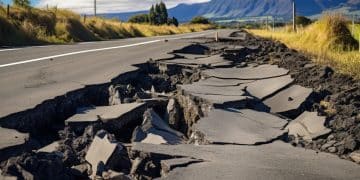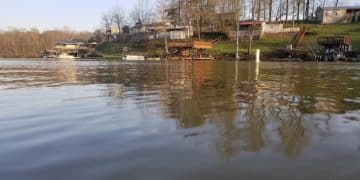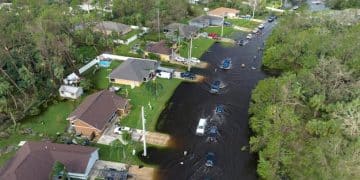Wildfire Preparedness: 7 Steps to Safeguard Your Home

In a world where climate extremes are becoming more frequent, Wildfire Preparedness is no longer optional, it’s essential.
Whether you live in the hills of California or the suburbs of Colorado, wildfires can spread rapidly and unpredictably, placing your home and family at serious risk.
Being ready doesn’t just mean reacting quickly, it means planning ahead.
By strengthening your home, understanding your local risks, and having an action plan, you empower yourself and your community.
Understand Your Wildfire Risk to Build a Safer Future
Before taking action, it’s essential to understand your specific exposure to wildfire. Wildfire Preparedness begins with knowledge.
While many assume wildfires only affect remote forests, the truth is that fires can ignite and spread quickly in suburban neighborhoods, grasslands, and urban-wildland interfaces.
According to national data, over 4.5 million U.S. homes are located in high or extreme wildfire risk zones. States like California, Texas, Colorado, and Arizona are among the most affected.
However, due to rising temperatures, extended droughts, and expanding residential areas, wildfire danger is growing nationwide.
🔥 Evaluate the Vulnerabilities Around You
Identifying specific weaknesses on your property is a key part of any Wildfire Preparedness plan. The more you understand about the physical layout of your home and surroundings, the better you can act to reduce risk.
Key points to assess:
- Proximity to vegetation such as dry grass, brush, or dead leaves that can easily ignite
- Land elevation and slope, since fires move more rapidly uphill
- Wind patterns that can carry embers long distances and ignite spot fires far from the flames
Consult hazard maps and wildfire history through your local fire department or forestry service. These resources can help you measure your home’s threat level more accurately.
🧯 Know and Follow Local Fire Codes
Another crucial step in understanding your wildfire risk is learning about local fire safety regulations. Many jurisdictions enforce codes specifically designed to limit the spread of wildfires and make homes more fire-resistant.
These codes may require:
- Maintaining a defensible space around buildings
- Using non-combustible materials for roofs, siding, and decks
- Installing spark arresters on chimneys and screened vents to prevent ember entry
- Ensuring clear access routes for emergency vehicles
Staying compliant with these codes is not only mandatory in many regions but also plays a vital role in strengthening your overall Wildfire Preparedness and contributing to the safety of your entire community.
Understanding your wildfire risk gives you the foundation to take meaningful steps. By assessing vulnerabilities and complying with fire safety standards, you move from awareness to action in your Wildfire Preparedness journey.
Create Defensible Space to Strengthen Your Wildfire Preparedness

One of the most effective strategies in Wildfire Preparedness is creating a well-maintained defensible space around your home.
This carefully managed buffer can slow the spread of flames, reduce radiant heat, and give emergency responders room to protect your property more safely.
According to the American Red Cross, defensible space can make the difference between a home that survives and one that is completely lost.
OSHA reinforces that eliminating flammable vegetation and reducing fuel sources is essential in any wildfire risk area.
Defensible space is not about stripping your yard bare. It’s about managing vegetation in a way that reduces fire intensity while maintaining a healthy, fire-resistant landscape.
🔥 Zone 1: Immediate Zone (0 to 5 feet)
This is the area closest to your home and must be treated with the highest priority in your Wildfire Preparedness efforts.
Remove Ignition Sources Near Structures
All materials that could easily catch fire should be removed from this zone. That includes dry leaves, pine needles, firewood stacks, mulch, and even outdoor furniture made of flammable materials.
Consider replacing ground cover with gravel or hardscaping to eliminate combustible surfaces.
Regularly clean roofs and gutters and inspect for debris that could catch wind-blown embers. This zone should serve as a protective barrier that gives fire no direct path to your home.
🌿 Zone 2: Intermediate Zone (5 to 30 feet)
This zone works to disrupt the fire’s ability to move toward your house by reducing continuous fuel.
Space Out Vegetation to Prevent Fire Spread
Trees and shrubs in this zone should be properly spaced both horizontally and vertically. Trim lower branches so they are at least six to ten feet off the ground.
Keep grasses mowed and well-watered. Use non-combustible materials for fences or structures that attach to the home.
Avoid clustering plants too closely, as fire can travel from one crown to another. The aim is to break up fuel paths and prevent a fire from intensifying as it moves.
🌲 Zone 3: Extended Zone (30 to 100 feet or more)
This is the final zone where your focus is to slow the wildfire’s momentum before it reaches the core of your property.
Reduce Fuel Volume and Maintain Natural Gaps
Thin out dense vegetation, remove dead trees or limbs, and eliminate dried underbrush. Large trees should be spaced apart so their crowns do not overlap.
This zone is particularly important in rural or sloped areas, where fires can build strength quickly.
The wider and clearer this zone is, the more time you give your home and firefighters to react.
Creating defensible space is a foundational part of Wildfire Preparedness. It is not a one-time action but a recurring responsibility that should be reviewed seasonally.
By maintaining these three strategic zones, you reduce the likelihood of fire reaching your home and help protect your entire community from catastrophic damage.
Harden Your Home Against Wildfire to Maximize Wildfire Preparedness
A critical pillar of Wildfire Preparedness is hardening your home. This means reinforcing vulnerable parts of your property with fire-resistant materials and sealing off potential entry points for embers.
These proactive upgrades significantly increase your home’s chances of withstanding extreme heat and flying embers during a wildfire.
According to the American Red Cross, embers can travel more than a mile ahead of a wildfire, landing on roofs, decks, and other surfaces.
OSHA also warns that structural vulnerabilities are a leading cause of residential ignition. Strengthening these weak points can make your home far more resistant to fire damage.
🔥 Start with the Roof: Your First Line of Defense
Your roof is the most exposed and flammable part of your home during a wildfire. If embers land on a combustible surface, they can ignite it in seconds.
Choose Fire-Resistant Roofing Materials
Homes should be equipped with Class A fire-rated roofing, such as asphalt shingles, clay or concrete tile, or metal. These materials are designed to resist ignition and minimize the spread of fire once exposed to embers.
Maintain and Inspect Regularly
Even fire-rated materials won’t help if your roof is covered with dry debris. Clean gutters, valleys, and shingles frequently to remove pine needles, leaves, and branches.
Schedule annual roof inspections to catch any structural weaknesses or damage that could compromise fire resistance.
🛑 Ember-Resistant Vents: Block the Silent Threat
Vents are essential for ventilation but also represent a major vulnerability. Embers can be sucked into attic or crawl space vents, igniting flammable insulation or stored materials.
Seal Openings with Fire-Grade Mesh
Install ember-resistant vents using 1/8-inch non-combustible mesh screening to block embers from entering while maintaining airflow. Cover all vents on eaves, gables, foundations, and attics, ensuring no gaps or tears in the screens.
Upgrade or Retrofit Older Vents
Older homes may have unprotected or oversized vent openings. Consider replacing outdated vents with newer, wildfire-rated designs that have baffle systems or are specifically engineered to resist ember intrusion.
🔒 Windows, Eaves, and Siding: Reinforce the Details
Small details can make a big difference in your Wildfire Preparedness efforts. Exposed windows, open eaves, and combustible siding materials can all provide fire with a direct route into your home.
Choose Dual-Pane, Tempered Glass Windows
Dual-pane windows, especially those with one pane of tempered glass, are far more resistant to breaking under intense heat. This slows ember entry and prevents flames from accessing your interior.
Enclose Eaves and Soffits
Open eaves allow heat and embers to penetrate into the structure. Cover or enclose them with ignition-resistant materials, such as fiber cement board or metal.
Upgrade Combustible Siding
Replace wood or vinyl siding with non-combustible alternatives like stucco, metal, or fiber cement. These materials offer better protection and prevent fire from traveling along exterior walls.
Develop a Family Evacuation Plan as Part of Your Wildfire Preparedness Strategy
No Wildfire Preparedness plan is complete without a clearly defined and well-practiced evacuation strategy. When a wildfire strikes, there may be only minutes to act.
Having an evacuation plan in place reduces panic and ensures that every family member knows exactly what to do, where to go, and what to bring.
The American Red Cross stresses that evacuations often happen with little or no warning. Practicing your plan in advance prepares you to respond with confidence instead of fear.
OSHA also recommends advance preparation as a key factor in reducing injuries and saving lives during wildfire events.
🧭 Establish a Clear and Safe Meeting Point
When evacuating, there is a risk of family members getting separated. That’s why selecting a safe, well-known location as your meeting point is essential.
Choose a Safe Location Ahead of Time
Your designated meeting point should be outside the evacuation zone but easy to access. This could be the home of a friend or relative, a public shelter, or a known community center.
Make sure every family member is aware of this location and knows how to get there without relying on GPS or cell service, which may be unavailable during an emergency.
🎒 Prepare and Maintain an Emergency Go-Bag
Your Wildfire Preparedness plan must include a well-equipped go-bag for each family member. This bag should contain all critical items needed to survive for several days away from home.
Pack Essentials That Support Safety and Comfort
Each go-bag should include enough water and non-perishable food for at least 72 hours, along with essential medications, eyeglasses, hygiene products, and face masks to protect against smoke.
Flashlights, extra batteries, and a battery-powered or hand-crank radio are also highly recommended.
Additionally, carry physical copies of vital documents such as personal identification, insurance policies, medical prescriptions, and emergency contact lists. Store these in waterproof folders or plastic bags.
🔁 Practice Makes Preparedness
Creating a plan is only half the process. Practicing your evacuation procedures ensures your family can respond without hesitation.
Run Regular Drills
Schedule evacuation drills at least twice a year. Include routes for both driving and walking in case roads are blocked. Assign roles if needed—such as who grabs the go-bags or checks on pets—so responsibilities are clear in the moment.
Drills help identify weaknesses in your plan and allow you to correct them before facing a real emergency.
Developing a family evacuation plan is a life-saving element of Wildfire Preparedness. It provides structure during chaos, improves response times, and minimizes the emotional stress of sudden evacuation.
By planning ahead, choosing safe meeting points, and preparing reliable go-bags, you’re taking meaningful steps to protect what matters most: your family.
Stay Informed and Monitor Conditions to Strengthen Your Wildfire Preparedness
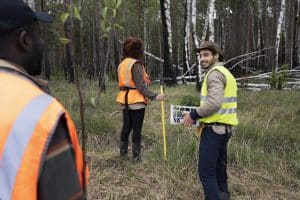
Information is power, especially in a wildfire emergency. One of the most important pillars of Wildfire Preparedness is staying updated on current fire conditions, weather patterns, and official evacuation instructions.
Quick and informed decisions can mean the difference between safety and danger when time is limited.
The American Red Cross highlights the importance of real-time awareness, noting that wildfires can change direction suddenly due to wind and terrain.
OSHA also recommends relying on trusted alert systems and weather monitoring tools to reduce the risk of delayed evacuation or exposure.
🔔 Sign Up for Local Emergency Alerts
Emergency alerts are your fastest way to receive critical updates from local authorities. These notifications are designed to reach you by phone, email, or text the moment a threat is detected.
Enroll in Official Alert Systems
Most counties and cities offer free emergency alert programs that notify residents about wildfires, road closures, evacuation zones, and weather warnings.
Sign up through your county’s emergency management website or public safety department. FEMA’s Wireless Emergency Alerts (WEA) and the Emergency Alert System (EAS) are also excellent resources available nationwide.
Alerts are often geo-targeted, meaning you’ll receive messages based on your exact location. This ensures you’re always getting information relevant to where you are, not just where you live.
🌤️ Monitor News and Weather Conditions Regularly
In addition to alerts, it’s vital to stay tuned into local news and regional weather during fire season.
Use Multiple Sources for Accuracy
Follow your area’s official fire agency on social media, tune in to local AM/FM radio stations, and use weather apps that provide Red Flag Warnings, air quality alerts, and fire perimeter updates.
The National Weather Service and NOAA also issue reliable updates on fire risks, especially during drought or high-wind conditions.
Don’t rely solely on a single source. Cross-check information and share updates with neighbors and family to keep your entire community prepared.
🧠 Awareness is Your First Defense
Staying informed isn’t something you do once. It’s a daily habit during wildfire season. Checking weather conditions, reviewing community alerts, and knowing your evacuation zone keeps you ready to act without hesitation.
Staying informed is a core part of effective Wildfire Preparedness. By signing up for alerts, following verified news sources, and understanding changing fire risks, you give yourself the time and clarity needed to protect your home and loved ones.
In wildfire situations, awareness can save lives, so stay connected, stay alert, and stay prepared.
Assemble a Wildfire Preparedness Kit to Be Ready for Any Emergency
Building a dedicated emergency kit is a vital component of Wildfire Preparedness. When evacuation orders are issued, there’s no time to gather supplies.
Having a pre-packed kit ensures that you and your family can leave quickly, safely, and with the essentials you need to stay protected and comfortable.
According to the American Red Cross, a well-prepared emergency kit can reduce panic, protect your health, and increase your resilience during a wildfire evacuation.
OSHA also emphasizes the importance of including items that support both physical safety and communication during emergencies.
🧤 Personal Protective Equipment (PPE)
Protecting your body from smoke, ash, and embers is critical during a wildfire. Your kit should contain equipment that shields your respiratory system, skin, and eyes.
Equip Yourself with Proper Safety Gear
Include N95 or P100 respirators to help filter hazardous smoke particles. These masks are far more effective than cloth face coverings in wildfire conditions.
Goggles or safety glasses should be added to protect your eyes from airborne ash and debris. Also, pack long-sleeved shirts and pants made of fire-resistant materials like cotton or wool to reduce the risk of burns.
📡 Communication and Navigation Tools
When roads are blocked and cellular networks are down, staying informed becomes a challenge. The right tools can help you navigate safely and receive real-time updates.
Stay Connected and Aware
Include a battery-powered or hand-crank radio to access emergency broadcasts, especially if power is lost.
Bring extra phone chargers and a portable power bank to keep mobile devices operational. Store printed maps of your region in case GPS fails or digital tools are unavailable.
🩹 First Aid Supplies
Medical support may be limited during a wildfire event. Being able to manage minor injuries can make a major difference.
Prepare for Common Medical Needs
Your Wildfire Preparedness kit should include a complete first-aid kit with adhesive bandages, antiseptics, gauze, tweezers, gloves, and any essential prescription medications.
Also, pack extra eyeglasses, inhalers, and medical instructions for any family members with ongoing health conditions.
🧳 Other Essential Items to Include
Your kit should support survival for at least 72 hours per person. Include bottled water, non-perishable food, blankets, flashlights, batteries, hygiene products, and copies of critical documents such as IDs, insurance policies, and medical records.
Keep everything organized in a durable, easy-to-carry backpack or bag. Store it in an accessible location so you can grab it immediately when needed.
Assembling a Wildfire Preparedness Kit is a practical and potentially life-saving step.
It ensures you are ready to respond quickly, maintain your safety, and care for your family under stressful conditions. In wildfire emergencies, being prepared isn’t optional, it’s essential.
Review Insurance Coverage to Strengthen Your Wildfire Preparedness
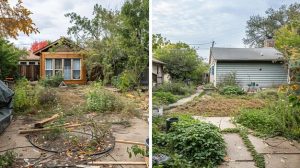
A complete Wildfire Preparedness strategy must go beyond physical safety. It also means ensuring you have the financial protection necessary to recover after a wildfire.
Reviewing your insurance coverage gives you peace of mind, knowing that if disaster strikes, you will not face it alone or unprepared.
According to the American Red Cross, many homeowners discover too late that they are underinsured. OSHA recommends reviewing insurance details frequently, especially if you live in a high-risk fire zone.
This simple habit can make a major difference in your ability to rebuild and recover after a wildfire.
📄 Understand Your Coverage Limits
Your policy should reflect the true costs of rebuilding your home and replacing personal belongings. This includes coverage for both structural damage and temporary relocation expenses if evacuation becomes necessary.
Ensure Coverage Matches Current Values
Confirm that your dwelling coverage is enough to rebuild your home at current construction costs. Review your personal property coverage to ensure it will replace everything from electronics to furniture and clothing.
Also, check your Additional Living Expenses (ALE) coverage to verify that it will cover costs like temporary housing, meals, and transportation if you are forced to leave your home.
💰 Review Deductibles and Policy Details
Knowing what you will pay out of pocket before your insurance takes effect is a key part of responsible Wildfire Preparedness.
Know What to Expect During a Claim
Some insurance policies apply higher deductibles specifically for wildfire damage. Be sure you understand how your deductible works and how it might vary depending on the cause of the loss.
Read through your policy’s fine print to identify any exclusions or limitations that could affect claims related to smoke, heat, or secondary damage like water from firefighting efforts.
📸 Create a Home Inventory
After a wildfire, filing an insurance claim is much easier if you have documented what you lost. A thorough home inventory saves time, speeds up reimbursement, and prevents disputes with insurance adjusters.
Record and Store Important Information Safely
Walk through your home and take photos or videos of each room. List the value of key items and include serial numbers when available. Save your records in a secure location, such as a cloud drive or a fireproof safe outside your home.
This documentation is one of the most practical steps in your overall Wildfire Preparedness plan.
Reviewing your insurance coverage is a vital part of Wildfire Preparedness. It allows you to act confidently during emergencies and recover more quickly in the aftermath.
Make a habit of reviewing your policy annually, especially after renovations or large purchases. Proper coverage protects more than your property. It protects your future.
| Key Point | Brief Description |
|---|---|
| 🔥 Defensible Space | Create a buffer zone around your home by clearing vegetation and flammable materials. |
| 🏠 Home Hardening | Upgrade roofing, vents, and siding to fire-resistant materials. |
| 🎒 Evacuation Plan | Plan your escape route, designate a meeting spot, and prepare a “go-bag.” |
| 🚨 Stay Informed | Monitor weather and emergency alerts to stay updated on wildfire conditions. |
Is Wildfire Preparedness Necessary?
▼
Wildfire preparedness is crucial for protecting lives, homes, and property in fire-prone areas. It helps mitigate risks and ensures a quicker, safer response during emergencies.
▼
Defensible space is a buffer zone around your property where vegetation and other flammable materials are managed to slow or stop the spread of wildfire. It is a critical measure for protecting your home.
▼
Home hardening involves upgrading roofing, vents, siding, and windows to fire-resistant materials. Sealing gaps and cracks can also prevent embers from entering your home.
▼
Your evacuation go-bag should include essentials like water, non-perishable food, medications, identification, a first-aid kit, a flashlight, and a portable radio. Also, pack extra clothing and blankets.
▼
You should review your insurance coverage annually or after making significant home improvements. Ensure your policy’s coverage limits are sufficient to cover rebuilding costs and replacing belongings.
The Urgency of Wildfire Preparedness
Taking meaningful action today is one of the most effective ways to protect your home, your loved ones, and your peace of mind.
Wildfires can ignite and spread without warning, but being prepared gives you the power to respond with clarity and confidence.
Wildfire Preparedness is not just a precaution. It is a long-term commitment to safety and resilience.
By creating defensible space, hardening your home, assembling a go-bag, and developing a clear evacuation plan, you reduce risk and increase your chances of a safe outcome.
Preparedness is not a one-time task. It requires regular updates, from reviewing insurance policies to checking emergency alerts and refreshing your evacuation routes.
These ongoing efforts are what keep your Wildfire Preparedness plan relevant and effective.
According to the American Red Cross, having an emergency plan and go-bag ready can drastically improve your chances of escaping unharmed.
Additionally, the OSHA Wildfire Preparedness Guide emphasizes that wildfire safety begins with education, planning, and active risk management at both individual and community levels.
Wildfire Preparedness is not just a precaution. It is a responsibility.
The steps you take now could be the very reason your family stays safe, your home stands strong, and your recovery is smoother after a crisis. Start today. Prepare with purpose. Stay protected.
Liked the article?
